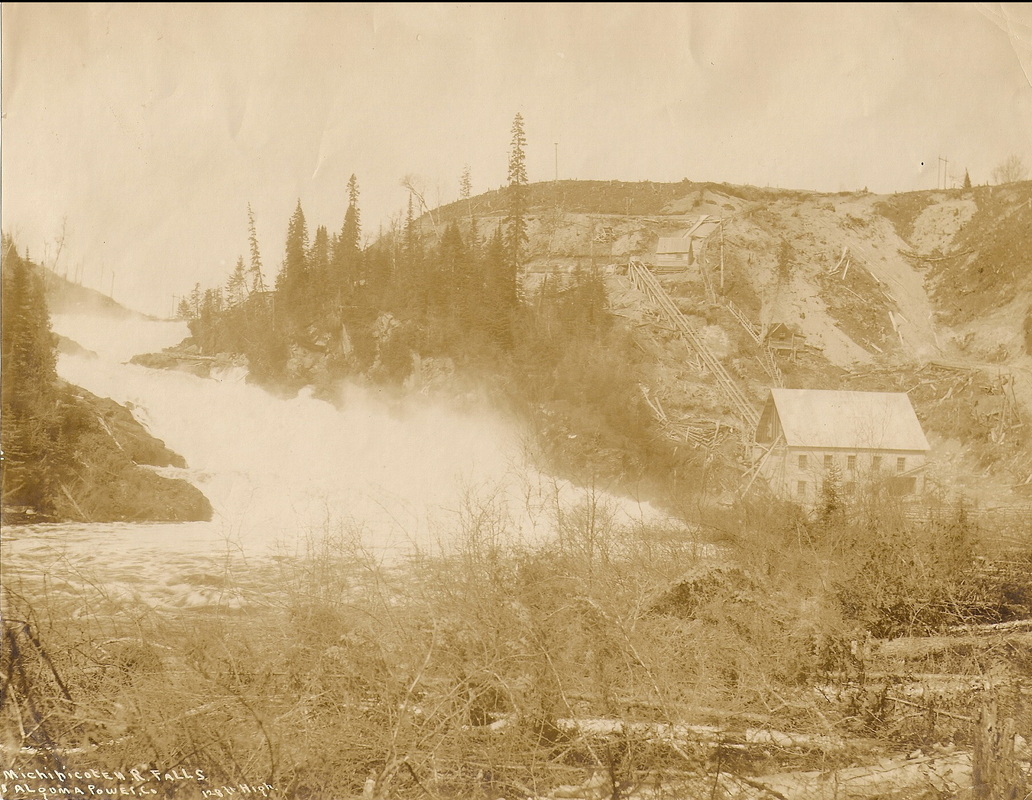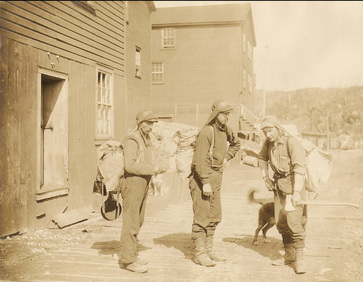Attempts to harness the power of the rushing rapids on the St. Mary’s River began in 1875. It was not until 1894 when Francis Hector Clergue arrived on the scene with his background in hydro development in the U.S. that Sault Ste. Marie had a reliable
source of power for the newly incorporated city. Always one to want to maximize profit, Clergue knew that lucrative industrial development needed to go hand in hand
with an efficient and cost-effective power generation venture.
The formation of Algoma Steel in 1901 included ownership of water power rights on the St. Mary’s River and the current power canal was constructed. In 1916, organization at Algoma Steel led to the emergence of Great Lakes Power Company which took over the rights to water power development on the St. Mary’s. Twenty-four power generation units were installed at the station, many of which were still being utilized prior to the plants replacement by the F.H.Clergue Generating Station
in 1981.
The dramatic succession of cascades over the 90 foot Michipicoten High Falls on the Michipicoten River was once the home of the infamous Long Portage (2.8 kms) for centuries. It also became the site of the first hydro operation in Northern Algoma.
D. B. Deitweiler of Berlin (Kitchener), Ontario completed the “run of the river dam” in 1907 to provide power to the Helen Iron Mine and gold mines in the area. In 1906, the birth the Magpie Mine north of Wawa led to the construction of a hydro dam at Steephill Falls on the Magpie River. Steephill produced electricity for the 100’s of miners and their families at both the Magpie and the Helen Mine until 1924. The dam was abandoned and can still be viewed today as one of the only remaining sites of a flat buttress style dam in Canada.
In 1927 the Michipicoten High Falls hydro plant was purchased and upgraded by the
Algoma District Power Company Limited. In 1929, a 112-mile transmission line was completed from High Falls to Sault Ste. Marie so hydro could be purchased by Great Lakes Power to supply the growing needs of the Sault and area.
The impressive scenery along the Montreal River depicted by the Group of Seven provided the backdrop for the construction MacKay and Andrews power generating stations in 1937 and 1938 respectively. The MacKay station today has the largest generating capacity of all the Northern Algoma plants at 62 mega watts (mW) and has a reservoir upstream which extends approximately 40 kilometres.
Below normal water levels and increased industrial growth and development throughout Algoma in the 1950’s heightened the need for expansion of hydro generation abilities throughout the district. The Scott Falls plant, located 1.5 miles downstream from High Falls on the Michipicoten was producing power by 1953. Two miles upstream from High Falls, the McPhail Falls hydro plant was completed in September of 1954. Four years later, the last dam on the Michpicoten at Hollingsworth was constructed 9 miles upstream from the McPhail location.
Downstream of the MacKay, the Gartshore (1958) and the Hogg (1965) completed the collection of hydro generating stations on the Montreal River.
Lucrative developments in the big business of power generation led to the redevelopment of facilities at Steephill Falls as well as 2 brand new operations on the Magpie River at Scenic High Falls and the Mission Generating Station at Silver Falls.
In 2011 the flow of hydro power pulsing through our homes and communities seems to have become as necessary to our everyday existence as the blood flowing through
our veins. The history and health of the water flowing through the St. Mary’s, Montreal, Michipcoten and Magpie Rivers is just as essential.


 RSS Feed
RSS Feed
